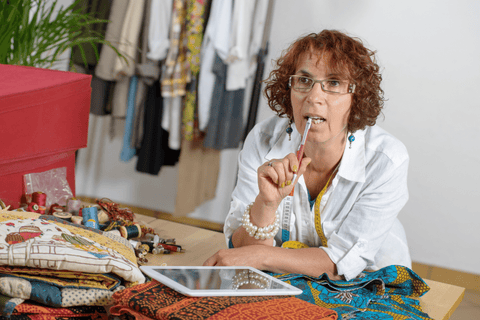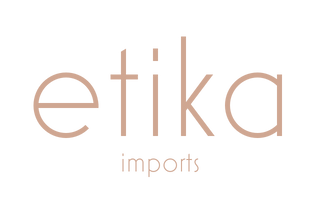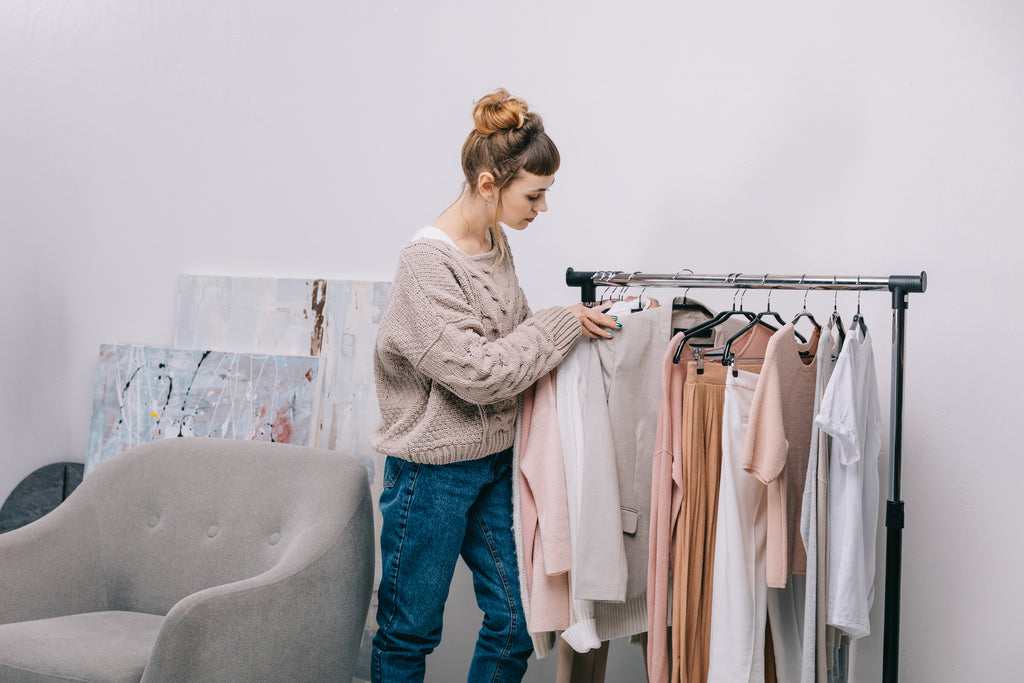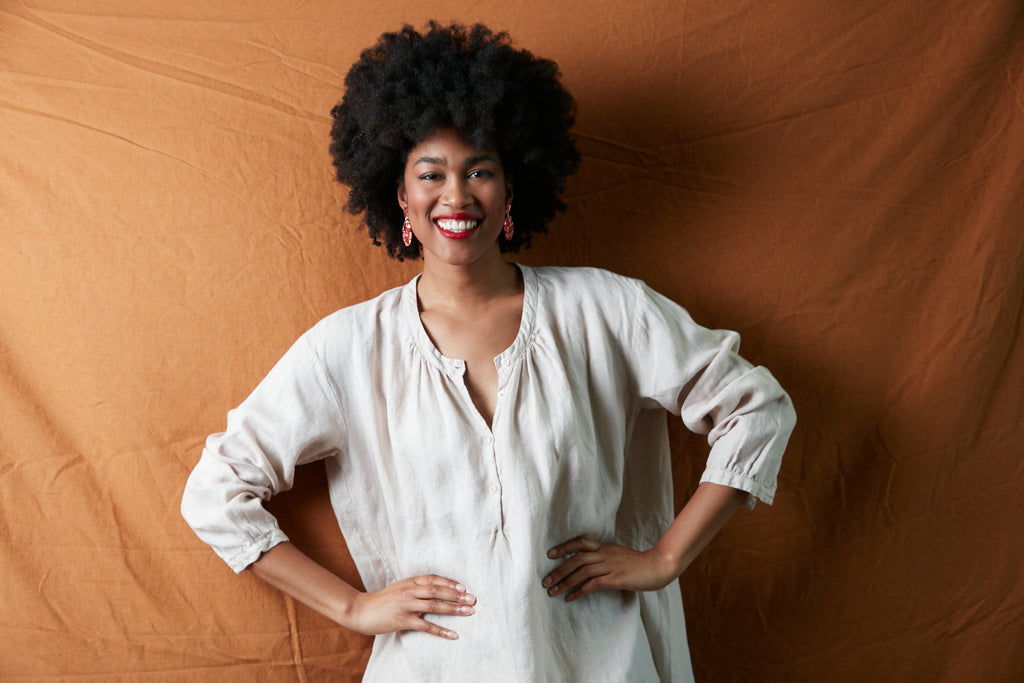How To Start An Online Clothing Business From Home
Sales from online clothing stores will have reached $713 Billion a year by 2022 It’s a booming industry that you’ve decided you want a piece of.
With Covid-19 restricting our movements and driving even more retail online, being able to run your business from home seems like a pretty safe bet. You’ve probably spent the last lockdown dreaming of your very own clothing boutique without all of the faff of shop rental. Think of the money you could save!
But, as with all business models, things can go wrong, and it’s much better to learn from other people’s mistakes than to have to make them yourself. So we’ve pulled together the top tips for starting an online clothing business, so you can get off to the best start.
-
Decide who you are
Like all businesses, you need to start by deciding what you’re going to sell and who you are going to sell it to. You need to choose a niche, and area that will be your speciality, whether it’s faitrade linen clothes, or screen-printed t-shirts. This niche will be your starting point.
Before you can choose the specific products that will sell successfully in your store you need to get to know the market, decide what products you love, which brands you admire. It always pays to do a little competitor analysis, and find out what is already out there.
You also need to spend some time thinking about your ideal customer. When you picture in your mind the person who will be buying from you, consider the following questions:
- What do they look like?
- How old are they?
- Where do they currently shop?
- What is their household income?
- What magazines do they read?
All these answers will help you work out what your online store is going to look like and who you will be reaching out to. This will include choosing a business name.
-
Sort out all of the legal stuff
Running a business in Australia means adhering to ascertain regulations. The first of these is to register your business name and get an Australian Business Number (ABN). You will need this to register with wholesalers, and to file taxes. You can do both here.
You also need to register for the relevant taxes including Goods and Services Tax, Pay as You Go Witholding Tax, and Fringe Benefits Tax. You can find a comprehensive guide to registering here.
-
Choose an e-commerce platform
It’s the 21st Century and everyown and her Aunt knows enough to make a basic website. If you’re planning to run an online business then your website has to look good, and has to be easy to navigate. Prospective customers will expect a professional-looking site when they visit, otherwise they will struggle to trust that you can deliver.
If you’re going to be selling products through your website then you need to make sure that it has eCommerce capability. Can it handle easy payments and provide good templates that showcase your products to their best advantage? Good options include Woocommerce, Wix, Shopify, Magento and Prestashop.
-
Register your domain name
To begin your online business, you need to find a domain name - what you customers will type in to come and find you. To find your name you can do an online search on the ecommerce platform you’ve chosen to see if your name has already been taken.
Making sure that your chosen name is available as a domain name is really important. If you have your heart set on being called Faye’s Fabrics, but someone else has a site called fayesfabrics.au then you may have to rethink. Domain names that don’t match business names confuse potential customers.
It’s also worth checking that the name is available on Instagram, Twitter, Pinterest , and Facebook, even if you don’t immediately intend to use these platforms, because you might change your mind later.
-
Use your eCommerce platform (all of it!)
You’ve gone to the trouble of choosing a platform that has great reviews and is easy to use, but don’t make the mistake of under-using it. Too many people ignore the capabilities of their platform, and how these can increase the performance and efficiency of your business.
Tracking Key Performance Indicators (KPIs) can give you valuable insights into where to focus your buying and advertising, who your customers actually are, and whether your site is working smoothly from visit to purchase.
A good eCommerce site will measure:
- Conversion rates (how often a visit results in a purchase),
- Average order value,
- Shopping cart abandonment (as this can highlight problems with your checkout process),
- Revenue on ad spend (whether your ad campaigns are worth it),
- Customer lifetime value, and
- Map overlay (where your customers are coming from).
-
Find your suppliers

Finding the right wholesale suppliers is key to providing quality products to your customers at prices that make them (and you) smile.
You can search for Australian wholesaler clothing suppliers online, or you can do some detective work of your own. Look on the labels of clothes you love and head to the brands’ website to find out which wholesalers they work with. Often different wholesalers will work within different clothing niches, so you can narrow down your search this way. For example, Etika imports provides 100% Italian linen clothing from high-quality designers.so if you’re looking to buy your linen clothes wholesale then we should be your first point of call.
Working with a wholesaler will involve applying for a wholesale account (for which you’ll need your ABN). You can then gather information on the minimum amount of stock you can order from them, their wholesale prices, and their delivery timeframes.
-
Have a logistics plan
As an online store, you’ll need to factor in getting your product to the customer. Some people work as dropshippers, not holding any stock but ordering it from their suppliers as soon as a customer orders it from their website. This can have logistical drawbacks, particularly a longer lead time.
If you are sending products from your own home to customers, then you’ll need to work out postage and delivery costs, as well as how you will handle this practically. Storage of the stock you’re holding will also be an issue you’ll need to consider.

-
Decide on your prices
By now you will have done a lot of research and collected a substantial amount of useful information. You should know fashion wholesale prices and your business costs (including taxes and logistics), as well as what margins you’ll be happy with. Your margins will determine your retail prices - what you will charge the customer.
-
Promote your store
Marketing is everything. There’s no point in having a fabulous product, or even a stellar website, if no-one knows it’s there. These days advertising is much more than putting an advert in a local paper, or up on a billboard. There are many different marketing avenues you’ll want to consider:
- Search Engine Optimisation (placing words on your site that people are searching the internet for)
- Blogging (writing interesting articles about your area of expertise, to give your customers added value)
- Social media marketing (using Facebook or Instagram and hashtags to make people aware of your brand)
- Online ads (you can pay to put ads on Google, or websites relevant to your niche)
- Email marketing (as long as you have people’s permission, you can send out newsletters or offers via email)
It’s important to remember that a consistent brand image across all platforms means that customer know what they are getting when they shop with you.
Conclusion
So, as you can see, creating a successful retail business is possible without needing to manage physical space on the high street. Building your online clothing store brings the dream of owning your own business well within reach. So what are you waiting for? Get started!
You can apply for a wholesale account right now with Etika imports here.
Continue reading






